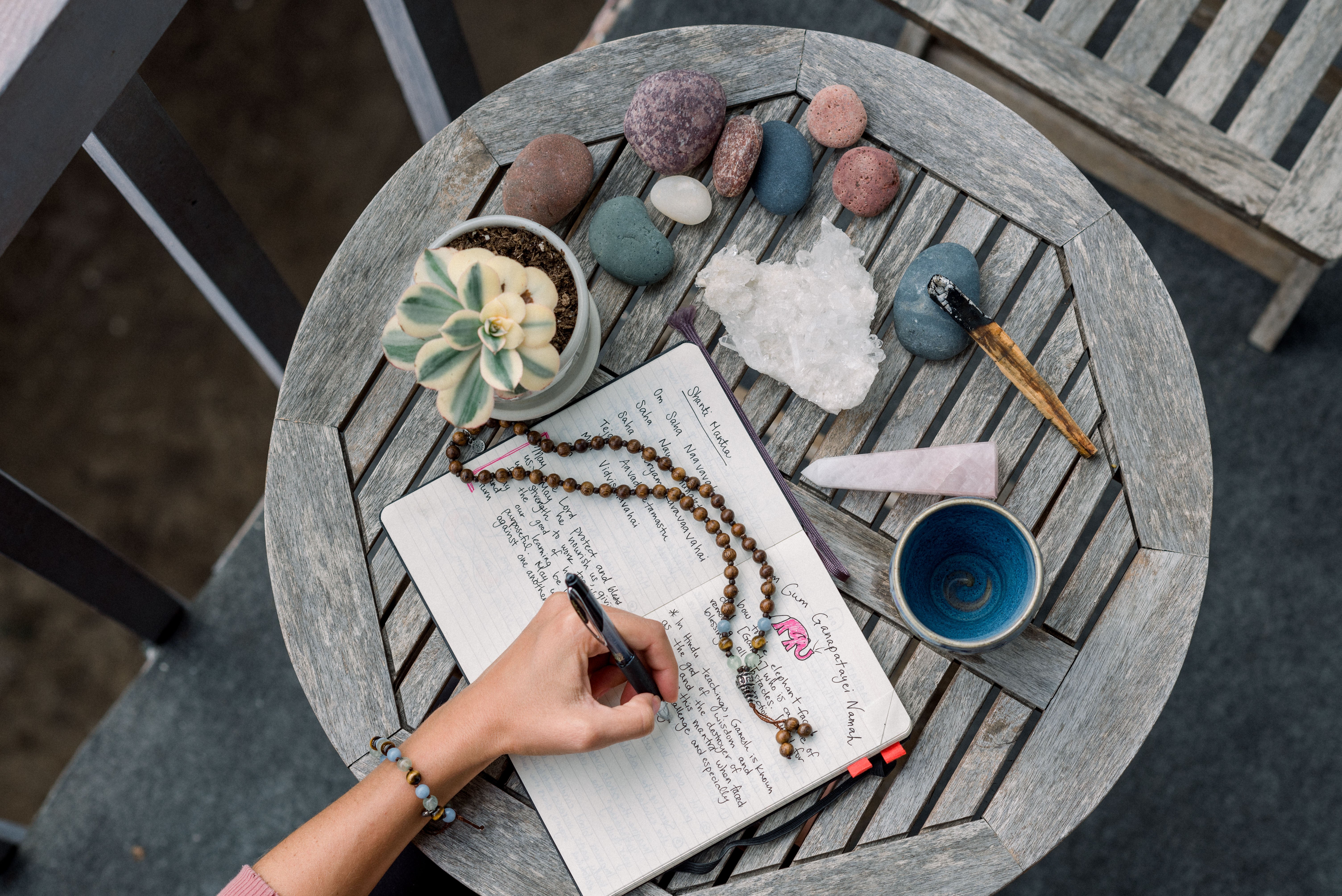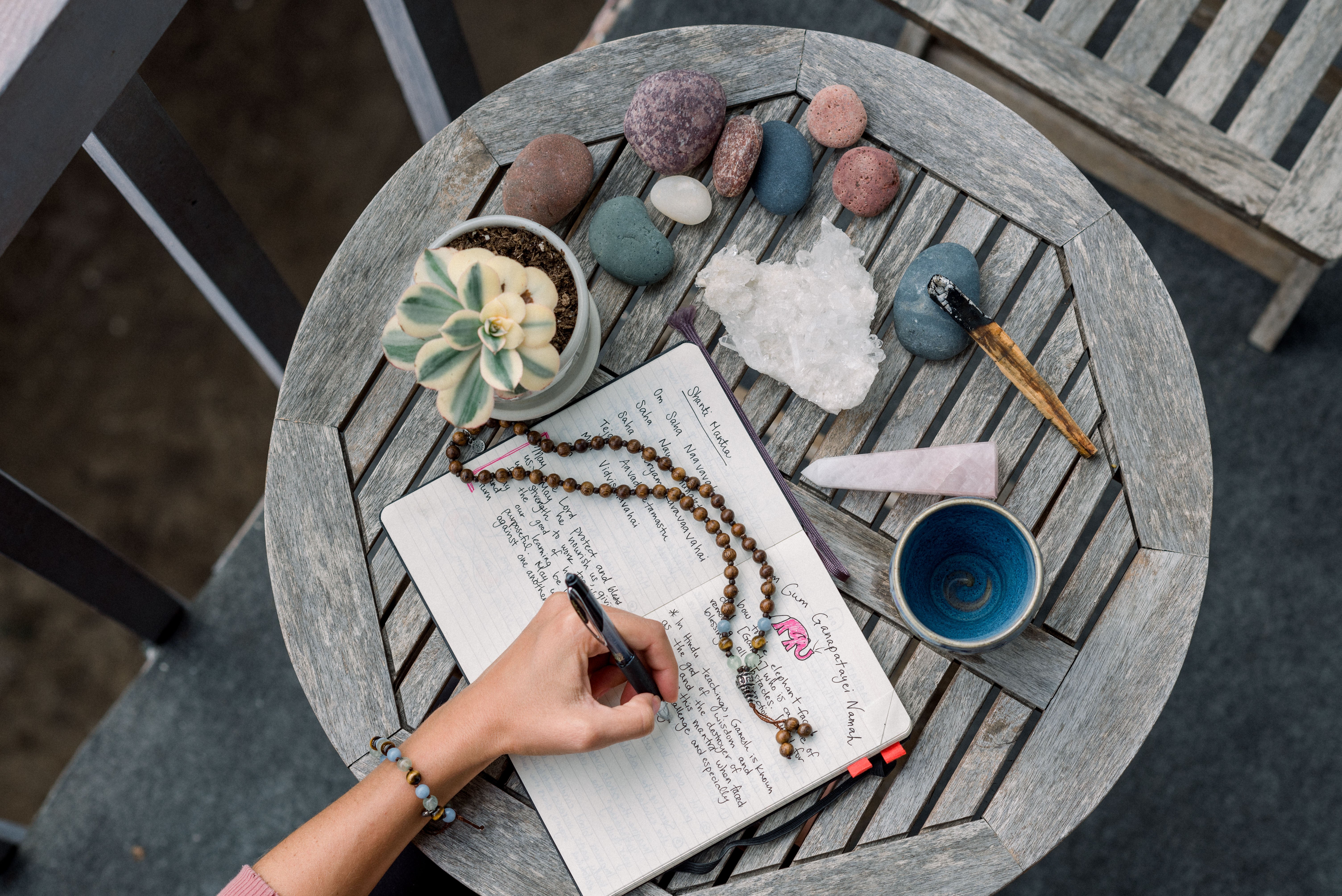Chakra Meditation: An Intro to Chakras + How to Align Them
To align with the launch of our new Chakra Madera collection, we teamed up with chakra meditation brand ChakyaLife for a closer look at the seven chakras. Here, ChakyaLife founder Evanna Shaffer explains what chakras are + how to use meditation to align them.
Chakras are energy centers in the body that impact our psychological, emotional + and spiritual states. When all systems are moving fluidly, we are aligned. If there is a blockage, energy cannot flow smoothly. Through meditation, we create stillness in our mind and bring awareness to our emotions and feelings. When we create peace within, we project peace into the world around us.
There are 7 major energy centers in the body that connect to the central nervous system along the spinal cord, from the base of the spine to the crown of the head. Chakras operate like a computer network, with each chakra acting as a hub. Each of the seven chakras connect to thousands of connecting ports, where information is received and transferred between smaller networks. If your “ports,” or chakras, are open, your network is running smoothly. If there is a blockage or malfunction, or if a port is overloaded with too much data, information cannot be transferred, and we recognize this as a block.
Many people find it challenging to meditate. Linking colors to music and movements in the body unveils fascinating discoveries into the chakra system. By inviting the senses to participate in a moving meditation that syncs chakras to colors, sounds + smells, we can activate these energy centers in the body. A chakra-based meditation engages the senses, makes meditation fun.

What are the seven chakras?
1. Red Chakra (Muladhara)
Red is the first chakra, representing our roots, our foundation, our DNA—who and where we come from. Red is the most vibrant color; it's the first color we lose sight of at twilight and the longest wavelength of light. Red is also the highest arc of the rainbow. A stimulant, red represents personal power, confidence + and life force energy. It is the color of birth, a beating heart. Red makes us stop.
The Red Chakra, Muladhara, means “root support” and is located at the base of the spine. If we have fears relating to basic survival and financial needs of life, our red chakra may become blocked. Hip openers such as seated meditation pose or wide leg straddle will open the red chakra. The mantra is “I AM safe. I AM secure. I AM alive. I AM grounded.” Repeating these affirmations and linking the statement to our conscious breathing is a reminder to ourselves that we are home, alive + safe, and our roots are one with the earth. We are right here, right now, in the present. Red is where we begin.
The red chakra opens us to our personal power and allows us to grow. This grounding brings solitude and stillness. By understanding the role of the red chakra, we work to understand and heal our bodies. The challenge is in accepting our body, feeling it, validating it + loving it. Eating is a first chakra activity. When we eat, we are nourished, and our physical body is supported. Meats and proteins such as lentils, sprouts, and beans are first chakra foods.
Meditating outdoors is a way to align our Red Chakra; connecting our sense of identity to the earth and aligning our inner compass, our identity + sense of direction when we feel lost. We belong to the earth, and red is our solid foundation upon which to start a new day, a new chapter, a new life.
2. Orange Chakra (Swadhisthana)
Orange is a deeply emotional color, and the element is water. Orange radiates warmth and happiness, blending the physical energy of red with the cheerfulness of yellow. The Orange Chakra, or Sacral Chakra, is located in the lower abdomen, about one to two inches below the naval.
Hip-opening movements such as boat pose (hugging the knees into the chest), happy baby, pigeon poses, dancing, seated meditation + pilates leg lifts will strengthen the muscles in the lower abdomen. Orange relates to our gut instincts and immediate emotional reactions. The Orange Chakra, Swadhisthana, means “sweetness”. Many restaurants use orange in their marketing and decor, as it increases appetite and promotes social interaction, which encourages patrons to dine longer.
Orange also relates to our sense of curiosity, sexuality, adventure + risk-taking, and connects us with our inner child. Orange is the link to our feelings and represents fluidity and change; our ability to ebb and flow with the tides of life. Swimming, dancing, squats + sufi rolls are movements that awaken the Orange Chakra. The mantra is “I FEEL ____”. Practice repeating the affirmations “I feel happy, I feel great, I feel alive” to engage the orange chakra.
3. Yellow Chakra (Manipura)
Yellow represents our personal power and identity, how we feel about ourselves. Fire is the element of the yellow chakra and it is located at the solar plexus—from the naval to the breastbone covering our core and mid-back. It is the chakra associated with our self-esteem and sense of responsibility.
Manipura means “lustrous gem”. Abdominal exercises, push-ups, running, hiking, breath of fire + warrior poses are movements that ignite the yellow chakra into action by raising the body temperature and inducing a sweat. As our action center, symbolized by the force of explosion, the yellow chakra mantra is “I DO.” Why do we do what we do? Is what we do rooted in pleasure? Or is it rooted in avoiding pain? If you don’t love it, why are you doing it? Progress equals happiness. If we stop growing, or stop “doing,” we start dying inside. Is what we DO rooted in love?

4. Green Chakra (Anahata)
Green symbolizes transformation, growth, regeneration, health + balance. The power of spirit and power unite at the center, where your Heart Chakra is located. The green chakra is our connection to love given and received.
Anahata means “unstruck.” Heart openers, cobra pose, fish pose, tree pose + arm circles will open the heart chakra. Located at the heart, the element is air. Alternative nostril breathing, breath of fire + hugs open the heart chakra.
Love is a connection that transcends space and time, and is one of the strongest emotions we experience. In the Hindu tradition, the deity associated with the heart chakra is Vayu, lord of the winds, also known as Prana, “the breath”. In Sanskrit, “Pra” means constant. “An” means movement. In Yoga, prana refers to the original life force. Falling in love is a fourth chakra experience. When we say someone “took our breath away” or “my heart skipped a beat,” we are describing the biological sensation of falling in love, a fourth chakra experience. Love carries many forms: compassion and acceptance for other people, animals, the planet, a project, business, interest + most importantly, love and compassion for ourselves.
Connection is the energy of love, and connection to that love source never dies; it simply changes form. When our heart overflows, we can’t help but speak—opening a pathway to the Blue Chakra.
5. Blue Chakra (Vissudha)
Vissudha means “purification,” and blue symbolizes truth, communication, trust + freedom. When mixed with other colors, blue is the only color which maintains its own character in all tones. Blue will always stay true.
Located in the throat and associated with communication, the blue chakra connects us with our voice. Speaking up, singing and laughing are excellent emotional releases that reduce stress and fear. Our choice of words + the tone our voice carries indicate what is in our heart. Our words are our power, and should be chosen with care and delivered with intention.
Ether, the air and sky, is the element associated with the Blue Chakra. When we are clear and intentional with our choice of words, we will get a clear signal back. When we send mixed messages, we get static. A blocked Blue Chakra may manifest in an inability to harness our will, express our highest truth + live creatively.
Movements such as fish poses, plow pose, backbends, inversions, neck rolls, belly breathing, lion’s breath, singing, laughing + vows of silence open the Blue Chakra. This stillness leads us to unlocking the sixth chakra.
6. Purple Chakra (Anja)
Purple is the color associated with the sixth chakra, Anja, meaning “command center”. The Anja chakra is located at the center of the forehead, between the eyebrows. It is referred to as the “Third Eye Chakra”. Our ability to see both physically and intuitively, clear visioning, seeing “the big picture” + acting intentionally and with a sense of discernment indicates a healthy sixth chakra.
Purple symbolizes our intuition, gut instinct + inner wisdom that guides us through the peaks and valleys of life. This is a space of self-reflection; our ability to see both physically and intuitively. The element is light, the feeling is sense + the force is spirit.
Intuition is the ability to know immediately. Without the need for conscious reasoning or data, intuition comes from the gut. Removing interference, minimizing distractions, separating fears from the unconscious enable us to obtain clarity and say “no” to anything or anyone who does not support the vision.
Visualization is a Purple Chakra meditation. Visualization enables us to obtain clarity by seeing, feeling, tasting, smelling + creating the experience in our mind before it happens. Backbends, inversions + child’s pose are movements to open the Purple Chakra. Closing our eyes, silencing outside stimuli + going “within” open the pathway to our inner wisdom. Intuition speaks in the clear tranquility of silence, and a still meditation is key for connecting with our inner guidance system.
7. White Chakra (Sahaswara)
White is the absence of color; representing pure, innocent, weightless soft light. Transformative and acting as our connection to divine cosmic intelligence, white is the best place to create a new life.
Pure awareness, consciousness, timelessness, spacelessness—this is a place of all-knowing. Like a blank canvas, white is the dawn of the next dimension; the awakening of a brilliant idea. Located at the cerebral cortex—the crown of the head—the white chakra represents a unification of knowledge, wisdom, clarity, compassion and is our connection to pure love. White represents new life.
Each chakra is a control center, responsible for aspects of consciousness. The greater alignment we have in our mind and body, the more conscious awareness we have over our thoughts, actions + our life choices.

Evanna Shaffer is the founder of ChakyaLife + the creator of the ChockRotation workout. Her interpretation of chakras stems from her background as a classically trained artist and musician. Her chakra alignment and meditation techniques link color, sound + physical movement on a circular mat. She teaches private and group sessions throughout Southern California, and her methodology explores awakening chakra centers through movement and meditation in an multi-sensory environment.
This month, we're giving away a piece from our new Chakra Madera collection + a meditation cushion from ChakyaLife. Enter the Summer Chakra Giveaway here for your chance to win.







